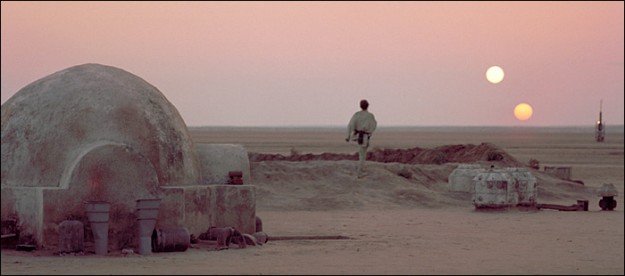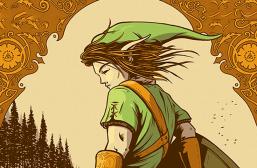Cinematic Games: Video Games and the Shadow of Cinema
Most of us will have heard it before, perhaps even said it ourselves – that (critically-acclaimed game here) is “cinematic”. Often, the term is deployed with reverence, and certainly used from a place of praise to attract potential gamers. Much of Hideo Kojima’s reputation as a video game auteur arose from how revolutionary the Metal Gear Solid series was – not only for innovations in gameplay that helped inform the stealth genre afterward, but also in how storytelling can be the driving force for games. More precisely, the storytelling in tandem with the directional approach employed by Kojima across the Metal Gear games have endlessly been described as “cinematic”. Not surprising, as Kojima has expressed a deep admiration for cinema his entire career – and this admiration has been stamped all over the series – from references and homages to technical direction. The interest of “cinematic” games however, is not centralized to Metal Gear games alone.
Deeming a game “cinematic” is a very common form of praise, one that has been seeing more use these days with newer games making gains in cinematic storytelling. Critics did not walk away from Naughty Dog’s The Last of Us (2013) commending its groundbreaking gameplay (though some likely did); it was the game’s story, its characters, and particularly the performances that made waves throughout the community – with emphasis on how games are continuing to put on themselves map for their cinematic possibilities. After all, how could we forget that soul-shattering prologue? David Cage has been basing his design principles on emulating cinema for years, Until Dawn (2015) re-engages with narrative premise that we’ve seen endlessly in horror film, and Mass Effect (2007) was peppered with iconic tropes and imagery recognizable to sci-fi fans everywhere.


There is a running desire from many to see games reach the level of consideration and respect as a medium that others have long since achieved. While Games Studies is on the rise and quickly gaining recognition across academic institutions everywhere, there are still miles to go and bridges to cross before games sees the clout and regard that film and literature have seen for decades. A part of this desire for legitimacy manifests itself in using this idea of the “cinematic” to describe games – especially in describing games that we consider to be top of the form. Of course, this is not without pushback. Some reject the notion of cinematic games entirely and purport that games should stand alone without the influence of cinema, which may be removing the unique possibilities that games have to offer.
Cinema Envy
Henry Jenkins coined a useful phrase in his piece, “Game Design as Narrative Architecture” (2004): cinema envy. It describes a latent issue with discussions by game scholars when it comes to approaching game analysis. In brief, there is on-going dialogue over the place of conventional narrative in games and their appeal as an object of study – to some, these narratives represent an appealing place of examination for their socio-cultural valence and, as all artifacts of culture, deserve analysis. Others disagree, and see this over-emphasis on studying conventional narrative structures as ignoring and de-prioritizing the uniqueness of games and their possibilities. Interactivity and structural game design set the medium apart from others, such as film and literature, so focusing on narrative comes with the risk of making games derivative and de-specified from other mediums. “Cinema envy” here is used to describe the latter group’s critique of scholar’s desire to talk about games in the way others talk about films.
While this article does not speak to the on-going discourses in game studies in particular, it’s easy to see the vestiges of this conversation happening in the gaming community. Everybody’s Gone to the Rapture (2015) released to great critical acclaim, nominated for prestigious awards and re-igniting conversations about the status of games as an art form. Many gamers and critics, however, criticized its mechanics and its acclaim for being overblown. At the crux of the dialogue around Everybody’s Gone to the Rapture was the tension around this pedestalling of the “cinematic” – the game was critiqued as being little more than a walking simulator, elevated by its strong narrative components and cinematic presentation. Indeed, there is much to think about when a game with very few operative mechanics leads the charge as a critical darling. The question is whether or not this anxiety overblown or misdirected.

There is a very real fear that games can only ever achieve “high culture” status the more they approximate and emulate film. I’ve appropriated Jenkins’ term “cinema envy” here because its eerily appropriate to the conversation that’s happening now: are we in a constant of cinema envy, as detractors imply? Many AAA titles hyper-focus on photorealistic graphical styles and utilize engines that work toward that kind of look – Naughty Dog’s accolades for exactly this kind of direction Uncharted 4: A Thief’s End (2016) and The Last of Us on release is a good example. Additionally, part of the appeal and success of Overwatch (2016) stemmed from having a multiplayer shooter title that so emphatically dismissed the trend of gritty photorealism – that this was a trend in the first place says enough. We don’t necessarily escape the conversation with Overwatch either; the comparisons to Pixar are rampant, the marketing strategy of using cinematic shorts, and the fan demand for a feature film still harken to cinema’s lingering shadow over gaming.
Cinematic Gameplay
Cinema is the leading force in image-based mediums, both in study and in everyday cultural standing. Universities have entrenched film studies alongside sociology and English literature, high class award ceremonies exist to produce and perpetuate elite film culture, and the counter-culture art world has long embraced “art films” as a staple. Video games are a rapidly expanding, multi-billion dollar industry – but there’s no Oscars for video games (not to say that Oscars are representative of artistic merit, just to be clear). There are countless think pieces in circulation discussing whether or not video games are art. The topic evokes much passion and verve from its audience. To this day, some gamers will cite Roger Ebert’s “Video Games Can Never be Art” (2010) piece with as much contention and outrage as the day it was published. We have a passionate consumer base devoted to the belief that games are art and deserve cultural recognition, and yet many will vehemently push back against any convergence of games and film.
I understand the desire to see games stand on their own, and fully subscribe to the notion that they should. That said, this belief that drawing from filmic sensibilities in media-making (especially in terms of narrative construction and direction) are antithetical to games doing just that is entirely more complicated than is easy to admit. In academic circles, games are currently fighting the battle that film used to have to back in its infancy – as cultural artifacts worthy of study beyond their structural components, able to be observed for their narrative and aesthetic potential. There is a lot to be said about the way films tell stories and evoke responses from its audience – it would not have endured and reached the place in our culture it has now otherwise. Games possess the same potential. There was a strong appeal in the way The Last of Us visually resembled a film, but it was especially appealing because it resembled a film the player got to be a part of.

Games have the ability to do what films do and with added dimension; caring for Clementine in The Walking Dead Game (2012) was emotionally resonant not only because of the game’s excellently crafted narrative and directional prowess, but because her wellbeing hinged on player choice. The interactive element in games will always set games apart from any other medium. What we would be remiss to forget is that this interactivity can “interact” with filmic sensibilities in ways that generate unique, pleasurable experiences that do not come at the cost of evaluating games on their own terms. Metal Gear Solid 3: Snake Eater’s (2004) final showdown was set in a picturesque scene, framed by white flowers and the game’s 007-esque theme song, following a long expository cutscene – but the game interrupts itself to give players the power to pull the trigger themselves and engage with the story in a way that only video games have the power to do. The cinematic direction and sensibilities here hyper-emphasize the moment you’re put in control again – the two “modes” work together to inform one of the series’ most powerful moments.

This is a conversation that requires more than the abilities of one article to find a resolution for (if a resolution can even be found). The way we conceptualize games – what makes games good, what constitutes a “real game”, what games are capable of, and so on – become complicated by the inevitable interaction with cinema and cinematic sensibilities to visual storytelling. Great games can speak to us in ways that harken back to the power of cinema, and often times the two do not have to be completely opposed and can inform each other to create engaging experiences. There is something to be said, however, for how prevalent the term “cinematic” gets deployed when speaking of games, of how this unique and emergent medium becomes subsumed by another, more established powerhouse. The desire to see gaming stand on its own comes from a place of genuine concern, in a media landscape that praises “cinematic” games and elevates the parts of them that de-specifies them as game
References
Ebert, R. (2010, April 16). Video Games Can Never be Art. Retrieved from http://www.rogerebert.com/rogers-journal/video-games-can-never-be-art
Jenkins, H. (2004). Game design as narrative architecture. Computer, 44(3).
What do you think? Leave a comment.











This is a fascinating and true article. I’m using this as a source for a deeper study in university.
Games are making inroads but are nowhere close to cinema in general though it’s not hard to find better narrative, atmosphere and themes in games compared to say prefab cinematic rubbish like Yogi Bear.
Games like the metal gear solid series make mincemeat of 90% of films out there.
What happens when an audience becomes the performer…
Metal Gear Solid showed how games could move beyond anything experienced in a cinema back in 1998 – heartbreaking, awe inspiring, rivetingly entertaining to both play or just watch, it was like nothing I had ever experienced before or have since.
I would love to create or play a game (either board or computer) that could combine the mechanics of the Fable III King scenerio with a story, characterisation and complexity that matches Game of Thrones. Then, just then, might we have something more sophisticated than cinema.
Cinema can go places gaming can’t, but gaming can go places cinema can’t.
Great study on games.
Street Fighter 2 was tonnes better than Street Fighter the movie. This is a joke. Loved reading your piece.
The cinematic element worked so well for the opening scene of The Last of Us to cement the emotional connection, but beyond that it was more about the gameplay.
That’s very true. Cinema creates brings the strong character of fascinating heroes in the mind of audience, Video game builder use this already build heroes in their games according to there characteristics.
I think this is a great article.
In 20 years time, will someone who says ‘I don’t like computer games’ receive the same response that similar statements about music, books or films would receive today?
I think it’s also worth highlighting that the gaming world itself isn’t the most friendly toward games that go that little bit deeper. Metal Gear Solid 2, for example, was considered too confusing and too narrative driven. So although there are great games out there, I still think it’s miles behind cinema in general.
For the sake of all that’s reasonable, I wish games companies would stop trying to emulate film. When I play a game I expect a game, a test of skill with a decent chance of success or failure based on a combination of luck, skill and understanding of its terms.
When I watch a film I am prepared to accept a narrative presented to me.
As games try to mimic films, they tend to lose the skill aspect in order that their narrative (which is invariably weakened by the need for interactivity and the illusion of choice, there are no exceptions contrary to what anyone might think) be presented to all players.
I think some games are able to match that of any great film, because they have all the hallmarks: social commentary, emotionally immersive and skilfully crafted.
Interesting points!
Film characters are played (so far) by human beings with a full range of expressions and nuanced behaviour (unless you are a Hollywood actor!). A game is a set of cartoons moving around. Sophisticated cartoons, but just images. I can’t engage with a cartoon character in the same way I do with a human being. I am afraid that animation will take over from human actors though in the future. Thank God for theatre!
Any video game that allows the user interaction with the world is going to have the advantage over movies, which are a passive method of entertainment.
I have not encountered a game that offered the same visuals, acting and emotional depth that for example The White Ribbon, but then that’s not what I am searching in a game: I hate games that feel like films and films that feel like games.
One is an interactive experience which enables you to control the narrative/action in a game. The other is a passive experience where you put yourself into the hands of the director and accept the narrative as it unfolds.
Why watch Tony Stark when you can be Tony Stark in a story of your own creation?
Games cannot be emotionally engaging. Which doesn’t make it less worthy as an art form.
I confess I am not a gamer as such; the most I’ve done is played GT4 and hurtled around the Nurburgring in under 7 mins (gloats), but having said that you’ve written an intriguing article that has made me think that perhaps I’ve ignored the cinematic depth being achieved by mainstream gaming. Well, you live and learn. Thanks for the enlightening read.
Great points, and very intriguing ideas raised, although I would make the argument that in terms of narrative structure, most video games play out more like a season of a TV program (with many elements of Cinema).
Sometimes chapters (or episodes) will be defined and sometimes not, but throughout the course of certain games you are given such an ample amount of time with the characters, that the actual length of time playing/watching equates to a season of TV (8+ hours).
This only points to the merit of a video game’s narrative potential, which you really make a great case for in your article.
Very interesting. Video games have had story lines for quite a few years, but the way it’s portrayed now certainly takes on a cinematic quality. It’s true when they say it encourages people to buy and play the games.
I have definitely seen and felt the impact of cinema on video games, and I agree that there are benefits and drawbacks to using the terminology of film to study video games, but I do think that this is a trend that can also be traced back to struggle of film under the shadow of literature – as you touch on here. The terminology used to study literature for years is constantly used to examine film, but the difference is the leap between written texts and film which was a bigger one to make compared to film to video game. I think it was easier for film to develop its own terminology because it has more room to distinguish itself from written texts.
Having said this, I definitely agree that the interactivity of games is going to be the key in developing a more sophisticated, independent field of research for the medium. Games like Brothers: A Tale of Two Sons and Ico are perfect examples of the feeling of personal connection and commitment that you can develop through video games that is not available in cinema, and if we continue to focus on that aspect, I think video games can easily carve out a place in academic study that is more nuanced and productive.
Great article.
Now almost video game have a dark scene and dark color, it make me a liittle depress when play it.
Really interesting article. My colleague and I were discussing the need for cinematographers and scriptwriters in Gaming. Its seems there is a market for it and very few places/university courses that deliver it. I try to encourage my students to look at gaming as a possible career option when finishing film.
This is a really interesting article! It is important to remember that some game makers are also watching and inspired by films and other mediums (Kojima is a good example). This is a well written and interesting article.
Everything said within this article is true. I was captivated by everything Last of Us did as a story.
I think games really need to stop trying to be more cinematic and tell their narratives through ways only a game can. Player agency, transforming content, multiplayer, and other systems are all unique ways to tell stories that so many games (particularly AAA games) never take advantage of.
It’s easy to see why cinema has had the impact it’s had on gaming, and how many developers wish to emulate it. But if game developers want to be taken more seriously, I think the first step should be to stop apologizing for being games.
Nice article. There is no doubt in my mind that video games are art. The way the audience can interact with video games makes them special but also confusing and inaccessible for some people.
You are spot on in saying this is a huge topic though but you have done a good job exploring this part of it.
I always felt that video games are art, however I hate it when video games are tooooo cinematic.
Life is Strange, Walking Dead and other cinematic games do not entertain me. I like a nice balance between gameplay and story.
Best example I can give is the Metal Gear series. Yes, 4 does have a long cut scene, but there is enough gameplay in between that it feels like a nice reward. Like, man, I finally made it! That type of feeling.
Good, thoughtful, provocative essay!
I’m left thinking about how the early relationship between literature and film mirrors what you identify as the current relationship between film and video games.
Literature was the strong influence in film’s early days. Literary techniques — esp. perspective, narration, characterization, and symbolism — were adopted by early film makers, and film makers often even adopted (and continue to adopt) the content of literary works instead of creating entirely new stories on their own. Like film, literary analysis (for aesthetic, not religious purposes) wasn’t always considered a suitable subject of formal study; it’s a relatively new field of study (c. 1850+).
Is it possible to think there’s a pattern, then? One medium influences a newer medium in profound ways, and the newer medium slowly comes to eclipse the medium that came before it?
My prediction is that interactive video storytelling — demanding an active player, as in a video game, rather than a passive viewer, as in a film — will challenge and possible eclipse cinema as a dominant form of entertainment.
When it comes down to it, cinema and video games are opposite sides of a coin; there are places where they come together and connect, but the vast surface of each is separate from each other. In that way they are their own entities, and fill differing niches in modern society. To attempt to compare them, or rate their impact relative to each other… well that is easier said than done.
This is a very insightful reading!
The gaming world is absolutely blurring lines between “playing a game” and “being immersed in a game”.
I love the fact though that while I’m playing I am also apart of constructing the narrative. I think the issue lies where film and games become one and you’re not able to play the game without following the film’s structure piece for piece.
Very interesting and hot topic! Personally, I do find myself drawn to cinematic games because of my own passion for films and interactive storytelling. Even looking at the popularity of series from Telltale (The Walking Dead and The Wolf Among Us), as well as Life is Strange from Dontnod and Square Enix, show how well these cinematic games are received by the gaming community.
However, not every game needs a story or cinematic quality. At all. That’s the beauty of narrative design. Think about Mario, for instance. There’s no real story – just the simple fact that Mario wants to save Princess Peach from Bowser. That’s it. No crazy cinematics or in-depth storytelling. The games were and still are incredibly popular.
And that’s the thing about games. If you want to make a cinematic, narrative-driven game, you can. Or you can make a simple, yet lovable platformer that many enjoy for its level design and mechanics.
It’s excellent how video games can mirror the thematic emphases that cinematic films produce, but are capable of adding a functional layer of interactivity and expeditionary adventure as a player rather than a passive viewer.
Very interesting insight into the reign that Hollywood has not only on our concept of video games comparatively against movies but also the lens in which we consider them through. We attach terms that are designed for film going experiences to other media and perhaps therein lies the problem as well.
Does any recall the time when movies had tie-in video games? I want to say this ended around ten years ago but throughout the 1980s, 1990s, and 2000s there was almost always a video game release for any big motion picture. (Although primarily action or children’s movies because Hollywood also knew their target audience.) Perhaps with the still divisive idea that games are unique art-forms in and of themselves and the audience for such things extends well beyond – and I mean this in the best way possible – nerds and children, Hollywood and the consumer has outgrown the desire for such cash grabs.
I think art has many arms, games will reflect movies and vice-versa. In the end, they all reflect life and its complexity.